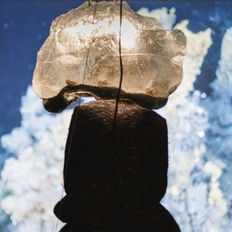PARABOL
Kunsthall 3,14 has three gallery spaces, where we present contemporary art in various media and genres. PARABOL is the name we use for the sound shower located in the foyer. The sonic works presented here are curated by Lydgalleriet on invitation from Kunsthall 3,14, with the intention of reflecting the always relevant exhibition themes presented upstairs. PARABOL was initiated in 2008, and is a running collaboration that makes use of the abundant professional expertise and artistic diversity in Bergen. PARABOL emphasizes sonic works and commissions by artists early in their careers.
Since summer 2025, PARABOL has been curated by Peter Meanwell at Lydgalleriet.
The first sound works were curated by Jørgen Larsson, 2009–2013. From March 2014 to January 2017 PARABOL was organized and curated by Johnny Herbert. From 2019 to 2025 PARABOL was curated by Julie Lillelien Porter.
Learn more at www.lydgalleriet.no
ARCHIVE
UTSPILL
Det kollektive lydverket UTSPILL ble produsert i forlengelse av 3,14s utstillingsprogram i 2017, som gjennom en rekke prosjekter undersøkte dualitet og kognitiv motivasjon. De utvalgre lydverkene har felles at de undersøker kulturelle verdier og gruppeidentiteter, og sier noe om hvordan narrative bilder av samfunnet formes og fra ulike ståsted ser på situasjoner vår virkelighet er bygget opp av.

























